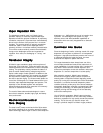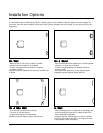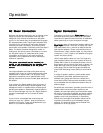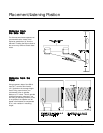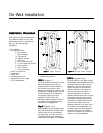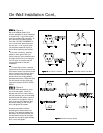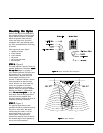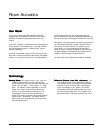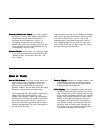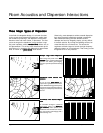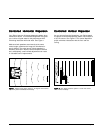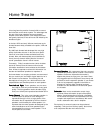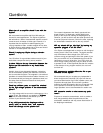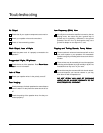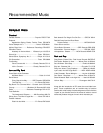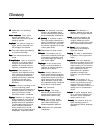
Page 17
Stylos User's Manual
Resonant Surfaces and ObjectsResonant Surfaces and Objects
Resonant Surfaces and ObjectsResonant Surfaces and Objects
Resonant Surfaces and Objects. All of the surfaces
and objects in your room are subject to the frequen-
cies generated by your system. Much like an
instrument, they will vibrate and “carry on” in
syncopation with the music and contribute in a
negative way to the music. Ringing, boominess, and
even brightness can occur simply because they are
“singing along” with your music.
Resonant CavitiesResonant Cavities
Resonant CavitiesResonant Cavities
Resonant Cavities. Small alcoves or closet type areas
in your room can be chambers that create their own
“standing waves” and can drum their own “one
note” sounds.
Clap your hands. Can you hear an instant echo respond
back? You’ve got near-field reflections. Stomp your foot
on the floor. Can you hear a “boom”? You’ve got
standing waves or large panel resonances such as a
poorly supported wall. Put your head in a small cavity
area and talk loudly. Can you hear a booming? You’ve
just experienced a cavity resonance.
Rules of ThumbRules of Thumb
Rules of ThumbRules of Thumb
Rules of Thumb
Hard vs. Soft SurfacesHard vs. Soft Surfaces
Hard vs. Soft SurfacesHard vs. Soft Surfaces
Hard vs. Soft Surfaces. If the front or back wall of your
listening room is soft, it may benefit you to have a
hard or reflective wall in opposition. As well, the
ceiling and floor should follow the same basic
guideline. However, the side walls should be roughly
the same in order to deliver a focused image.
This rule suggests that a little reflection is good. As a
matter of fact, some rooms can be so “over
damped” with carpeting, drapes and sound absorb-
ers that the music system can sound dull and lifeless.
On the other hand, rooms can be so hard that the
system can sound like a gymnasium with too much
reflection and brightness. The point is that balance is
the optimum environment.
Break-up ObjectsBreak-up Objects
Break-up ObjectsBreak-up Objects
Break-up Objects. Objects with complex shapes, such
as bookshelves, cabinetry, and multiple shaped
walls can help break up those sonic gremlins and
diffuse any dominant frequencies.
Solid CouplingSolid Coupling
Solid CouplingSolid Coupling
Solid Coupling. Your loudspeaker system generates
frequency vibrations or waves into the room. This is
how it creates sound. Those vibrations will vary from
20 per second to 20,000 per second. If your speaker
system is not securely planted on the floor or solid
surface, it can shake as it produces sound and,
consequently, the sound can be compromised. If
your speaker is sitting on the carpet and only foot
gliders are used, the bass can be ill defined and
even boomy. The use of spikes is recommended to
insure secured footing for your speakers.



